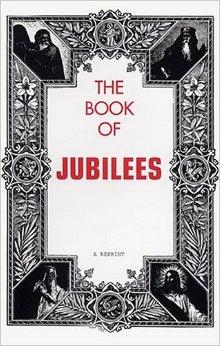A few months ago I argued for the intertextual nature of Genesis 15 and Leviticus based off of the sacrifices God orders Abraham to sacrifice. In search for further evidence of their connections, I came across Jubilees, which elucidates the intertextuality of the cultic practices of Leviticus and sacrifices of Abraham. Being a retelling of several biblical episodes from Genesis, the book of Jubilees (2nd Century B.C.) inserts unique elements to the account originally found in Genesis 15, namely a focus on obedience to God through cult. These elements provide insight as to how a 2nd Century B.C. Jew may have understood Leviticus and Genesis.
The following demonstrates the textual differences.
- Genesis 15:10 – He brought him all these and cut them in two, laying each half over against the other; but he did not cut the birds in two.
- Jubilees 14:10-11 – And he took all of these [animals] in the middle of the month. And he was dwelling by the oak of Mamre, which is near Hebron. And he built an altar there. And he slaughtered all of these, and he poured out their blood upon the altar. And he divided them in the middle. And he placed them facing on another, but the birds he did not cut up.
Genesis focuses more on the belief of Abraham in God’s promises. In contrast to Genesis, the centrality of Jubilees is on sacrifice and blood offering as the core for covenant and promise. Additionally, Jubilees notes the time of sacrifice, an indication of cultic ritual. Even though all of Jubilees reflects similar shifts to greater focus on obedience to the Torah, its redaction of Genesis 15 supports the idea that Genesis 15 and Leviticus have strands of intertextual connections.

